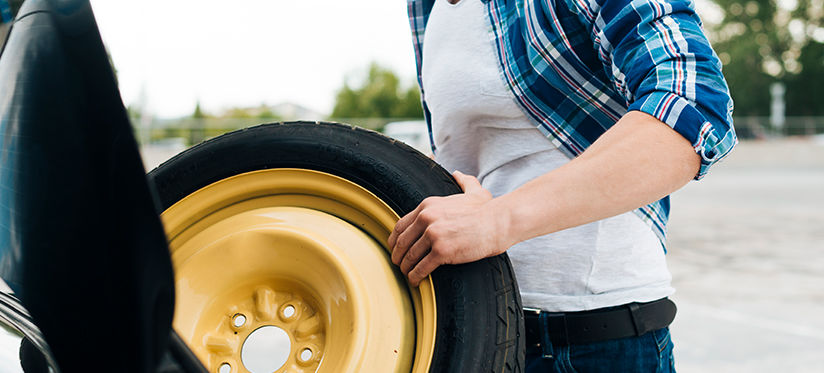
Tyre maintenance is a crucial aspect of vehicle safety and performance, and one common issue that drivers may encounter is tyre cupping. This uneven wear pattern, also known as scalloping or cupping wear, can affect the handling, ride comfort, and longevity of your tyres. In this guide, we'll explore what tyre cupping is, its causes, symptoms, and most importantly, how you can prevent it to ensure optimal tyre health and safety.
Understanding Tyre Cupping
What is Tyre Cupping?
Tyre cupping refers to the formation of irregular wear patterns on the tread of a tyre, resulting in a series of dips or cups along the circumference of the tyre. These cupped areas are often characterized by alternating high and low spots on the tread surface, resembling the shape of a washboard.
Causes of Tyre Cupping:
Improper Wheel Alignment: Misaligned wheels can cause uneven contact with the road surface, leading to cupping wear.
Worn Suspension Components: Damaged or worn-out shocks, struts, or bushings can result in excessive bouncing and vibration, contributing to cupping.
Underinflated Tyres: Low tyre pressure can cause the edges of the tread to wear faster than the center, leading to cupping wear.
Poorly Balanced Wheels: Unbalanced wheels can cause vibrations that result in cupping wear over time.
Aggressive Driving Habits: Hard braking, rapid acceleration, and sharp cornering can accelerate tyre wear and contribute to cupping.
Symptoms of Tyre Cupping
1. Noise:
Cupped tyres often produce a noticeable rumbling or thumping noise, especially at higher speeds.
2. Vibration:
A vibrating sensation, particularly in the steering wheel or throughout the vehicle, can indicate cupping wear.
3. Uneven Tread Wear:
Check your tyres regularly for signs of cupping, such as alternating high and low spots on the tread.
4. Handling Issues:
Cupped tyres may lead to reduced handling stability, decreased traction, and a less responsive steering feel.
5. Visual Inspection:
Examine your tyres visually for scalloped or cupped areas on the tread surface.
How to Avoid Tyre Cupping?
1. Maintain Proper Wheel Alignment:
Regularly check and adjust your wheel alignment to ensure all four wheels are properly aligned.
Proper alignment ensures even contact with the road surface, reducing the risk of cupping wear.
2. Check and Replace Suspension Components:
Inspect suspension components, such as shocks, struts, and bushings, for signs of wear or damage.
Replace worn-out or damaged components to maintain optimal vehicle stability and reduce vibrations.
3. Monitor Tyre Pressure:
Check tyre pressure regularly using a reliable pressure gauge and maintain the recommended psi (pounds per square inch).
Underinflated tyres are more prone to cupping wear, so inflate tyres to the manufacturer's specifications.
4. Rotate Tyres Regularly:
Follow a regular tyre rotation schedule, typically every 5,000 to 8,000 miles, to promote even wear across all tyres.
Rotating tyres helps distribute the forces of acceleration, braking, and cornering more evenly.
5. Balance Wheels Properly:
Ensure that your wheels are balanced correctly to minimize vibrations that can lead to cupping wear.
Balancing should be performed whenever new tyres are installed, after a puncture repair, or if you notice vibrations.
6. Drive Smoothly and Avoid Aggressive Habits:
Practice smooth driving techniques, including gradual acceleration, gentle braking, and smooth cornering.
Aggressive driving habits increase tyre wear and can lead to cupping over time.
7. Inspect Tyres Regularly:
Perform visual inspections of your tyres regularly to check for signs of cupping wear or other abnormalities.
If you notice any unusual wear patterns, have your tyres inspected by a professional technician.
8. Choose Quality Tyres:
Invest in high-quality tyres from reputable brands known for durability and performance.
Quality tyres are designed to withstand wear and tear better, reducing the risk of cupping but you should always be aware of the sources that can affect the life of your car tyres.
Benefits of Preventing Tyre Cupping
1. Improved Safety:
Avoiding tyre cupping enhances the safety of your vehicle by maintaining optimal traction and handling.
Even tyre wear ensures consistent performance in various driving conditions.
2. Extended Tyre Lifespan:
Preventing cupping wear helps prolong the lifespan of your tyres, saving you money on premature replacements.
Properly maintained tyres wear more evenly and last longer, providing better value for your investment.
3. Enhanced Comfort:
Cupping wear can lead to vibrations and noise, affecting the comfort of your ride.
Avoiding cupping ensures a smoother, quieter driving experience for you and your passengers.
4. Optimal Fuel Efficiency:
Evenly worn tyres contribute to better fuel efficiency, as they roll more smoothly and require less energy to propel the vehicle.
Preventing cupping wear helps maintain optimal tyre pressure and reduces rolling resistance.
Also read: Get the Right Tyres to Save Fuel on Your Car - Apollo Tyres
Concluding This
Tyre cupping, characterized by irregular wear patterns on the tread, can significantly impact the safety, comfort, and longevity of your tyres. By understanding the causes, symptoms, and preventive measures, you can effectively avoid cupping wear and ensure optimal tyre health for your vehicle.
Regular tyre maintenance, including proper wheel alignment, suspension checks, tyre pressure monitoring, and smooth driving habits, plays a crucial role in preventing tyre cupping. Additionally, rotating tyres regularly, balancing wheels, and choosing quality tyres from reputable brands contribute to overall tyre health and longevity.
By following these tips and being proactive about tyre care, you can enjoy a smoother, safer, and more comfortable driving experience while maximizing the lifespan of your tyres. Prioritize tyre maintenance, stay vigilant for signs of cupping wear, and address any issues promptly to keep your vehicle rolling smoothly on the road ahead.

